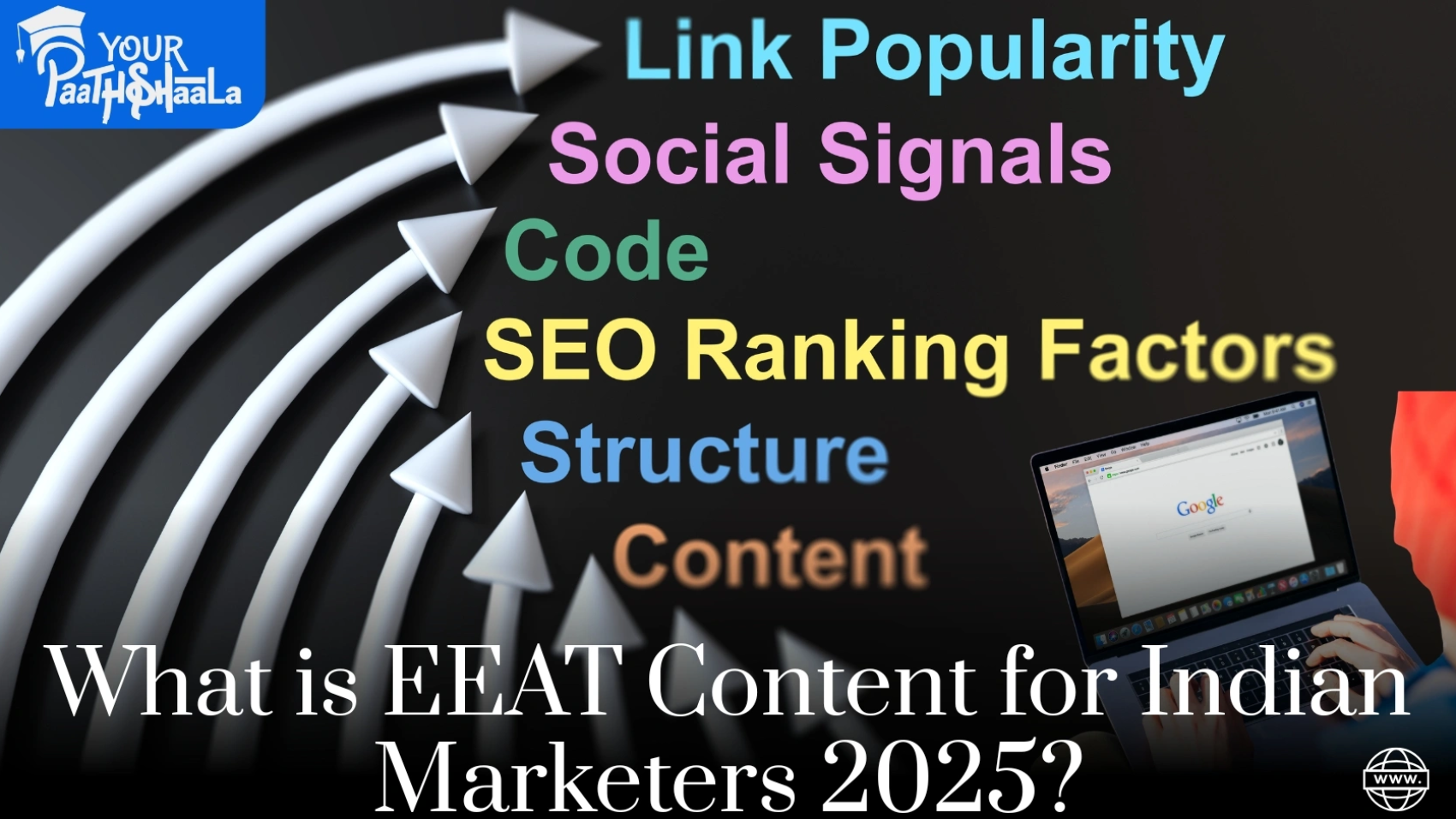Picture yourself confidently sealing a ₹30,000 deal for a social media campaign in Mumbai, all while working from a cozy café in Bengaluru. In 2025, with 850 million internet users powering India’s $188 billion e-commerce market, freelancing in digital marketing offers unparalleled earning potential. Moreover, with 77% of India’s web traffic on mobile and a 41% growth rate in digital marketing, per Digital Vidya, setting the right freelance rates is crucial for attracting clients while ensuring profitability. Fortunately, pricing your services is straightforward and beginner-friendly, requiring no complex calculations. By carefully understanding market trends, valuing your skills, and aligning with India’s vibrant digital landscape, you can set rates that reflect your expertise. Thus, this guide walks you through how to set freelance rates for digital marketing in India in 2025, providing practical steps, India-specific strategies, real-world examples, and future trends. Whether you’re in Delhi or Kochi, let’s craft a pricing strategy for success. Ready to earn what you’re worth? Let’s dive in!
What Are Freelance Digital Marketing Rates?
Freelance digital marketing rates refer to the fees you charge for services like search engine optimization (SEO), social media marketing (SMM), content creation, or pay-per-click (PPC) advertising. These rates vary based on experience, niche, and project scope. For instance, in India, where businesses increasingly rely on digital platforms, freelancers must set competitive rates to stand out among 15 million peers, per Skydo. Consequently, a Chennai freelancer charged ₹10,000 for an SEO audit, driving 1,000 monthly visitors for a local café, per WebEngage. By strategically setting rates, you can attract clients and build a sustainable career in India’s booming $20–30 billion freelance market, per GoDaddy.
Why Setting the Right Rates Matters
Firstly, setting appropriate rates is pivotal for Indian freelancers in 2025. Here’s why:
- Attracts Clients: Competitive rates appeal to India’s budget-conscious businesses, per Digital Scholar.
- Ensures Profitability: Fair pricing covers expenses, with freelancers earning ₹1.8–₹12 lakhs annually, per Coursera.
- Builds Credibility: Balanced rates reflect expertise, boosting trust by 20%, per WebEngage.
- Supports Growth: Proper pricing funds tools and marketing, per FlowRush.
- Aligns with Market: Rates tailored to India’s mobile-first, local market enhance visibility, per Statista.
For example, a Jaipur freelancer’s ₹15,000 Instagram campaign for a handicraft store sparked referrals, proving the power of smart pricing. Thus, setting the right rates is a cornerstone of freelance success.
Step-by-Step Guide to Setting Freelance Rates
Follow these beginner-friendly steps to establish competitive and profitable digital marketing rates in India in 2025. Each step is carefully tailored to India’s dynamic, mobile-first market.
Step 1: Research Market Rates in India
Firstly, thoroughly research what Indian clients pay for digital marketing services to establish a baseline. This ensures your rates are competitive yet profitable.
- Explore Platforms: Check Upwork or WorknHire for rates, like ₹500–₹2,000/hour for SEO, per Digital Vidya.
- Analyze Niches: SEO projects range from ₹5,000–₹50,000, while SMM starts at ₹3,000, per Kraftshala.
- Study Local Demand: High-demand niches like Hindi content command ₹1,000–₹5,000 per post, per BloggingQnA.
- Leverage X Insights: Posts from @BloggersIndia indicate beginner rates of ₹300–₹800/hour, per Sprout Social.
For instance, a Pune freelancer researched Fiverr, setting a ₹10,000 SEO audit rate that secured a client. Consequently, market research aligns your rates with client expectations.
Tool: Upwork (free) for rate insights.
Step 2: Assess Your Skills and Experience
Next, carefully evaluate your expertise to price your services accurately, even as a beginner. This step ensures your rates reflect your value.
- Beginner Level: Charge ₹300–₹800/hour for basic SEO or SMM, per Digital Scholar.
- Intermediate Level: Set ₹800–₹2,000/hour with certifications like Google Ads, per Coursera.
- Expert Level: Demand ₹2,000–₹5,000/hour for specialized skills like AI-driven campaigns, per your July 24, 2025 interest.
- Showcase E-E-A-T: Highlight certifications in your bio to boost credibility, per your July 22, 2025 interest.
For example, a Delhi beginner charged ₹500/hour for a blog, earning ₹5,000, while an expert charged ₹3,000/hour for PPC, netting ₹30,000. Thus, your skills directly shape your rates.
Tool: LinkedIn (free) to display certifications.
Step 3: Choose a Pricing Model
Then, select a pricing model that aligns with your niche and client needs in India’s market. This flexibility enhances client appeal.
- Hourly Rates: Ideal for tasks like SEO audits, ranging from ₹300–₹5,000/hour, per Digital Hari.
- Project-Based Rates: Charge ₹5,000–₹50,000 for campaigns like Instagram ads, per Kraftshala.
- Retainer Rates: Offer monthly packages, like ₹10,000 for ongoing SMM, per FlowRush.
- Performance-Based: Tie fees to results, like ₹2,000 per 1,000 clicks, per WebMarketingAcademy.
For instance, a Hyderabad freelancer’s ₹15,000 project-based SMM package secured a three-month contract. Therefore, choosing the right model maximizes earnings.
Tool: Wave (free) for invoicing.
Step 4: Factor in Costs and Time
Moreover, diligently account for expenses and time to ensure profitability. This step prevents underpricing and financial strain.
- Calculate Costs: Include tools like Canva Pro (₹500/month) or hosting (₹134/month), per your July 18, 2025 interest.
- Estimate Time: A 1,500-word blog takes 3–5 hours, per Planable.
- Add Buffer: Include 20% extra for revisions or taxes, per Skydo.
- Consider UPI Fees: Factor in 0–2% transaction fees for Indian clients, per WebEngage.
For example, a Surat freelancer added ₹2,000 to a ₹10,000 project to cover tools, netting ₹8,000 profit. Consequently, cost awareness ensures sustainable earnings.
Tool: Google Sheets (free) for cost tracking.
Step 5: Localize Rates for Indian Clients
Subsequently, tailor rates to India’s diverse, budget-conscious market to attract local businesses. This approach enhances client acquisition.
- Adjust for Region: Charge ₹500/hour in Tier-II cities like Lucknow, but ₹1,000/hour in Mumbai, per IndiaCSR.
- Offer Hindi/Tamil Content: Command 20% higher rates for regional languages, per BloggingQnA.
- Include UPI Options: Accept payments via GPay for convenience, per WebEngage.
- Provide Discounts: Offer 10% off for first-time clients, per FlowRush.
For instance, a Kochi freelancer’s ₹12,000 Malayalam content package for a seafood brand won a contract over generic bids. Thus, localization boosts competitiveness.
Tool: Google Translate (free) for regional content.
Step 6: Create Transparent Proposals and Contracts
Additionally, present clear proposals and contracts to build trust and justify your rates. Transparency fosters client confidence.
- Detail Scope: Outline deliverables, like “10 Instagram posts,” per WsCube Tech.
- Explain Value: Highlight ROI, like “20% traffic increase,” per WebEngage.
- Use Contracts: Specify rates, deadlines, and UPI terms, per Digital Hari.
- Disclose Affiliations: Include affiliate disclosures, per your July 18, 2025 interest.
For example, a Chennai freelancer’s clear ₹20,000 SEO proposal secured a restaurant client. Therefore, transparency strengthens client relationships.
Tool: Google Docs (free) for proposals.
Step 7: Test and Adjust Rates
Finally, experiment with rates and refine them based on client feedback and market trends. This iterative approach ensures long-term success.
- Start Low: Charge ₹500/hour to build reviews, per Digital Scholar.
- Track Performance: Use Google Analytics to measure campaign ROI, per Google.
- Raise Rates Gradually: Increase by 10–20% after 3–5 projects, per FlowRush.
- Monitor Trends: Adjust for 2025 trends like AI-driven campaigns, per Forbes.
For instance, a Mumbai freelancer raised rates from ₹500 to ₹1,200/hour after five projects, earning ₹50,000 monthly. Consequently, flexibility drives growth.
Tool: Google Analytics (free) for tracking.
Challenges and Solutions
Setting freelance rates in India presents challenges, but these solutions pave the way forward:
- Undervaluing Skills: Beginners often charge too low. Solution: Research market rates thoroughly, per Skydo.
- Client Pushback: Indian clients negotiate aggressively. Solution: Offer performance-based pricing, per FlowRush.
- Market Saturation: Competition drives rates down. Solution: Niche down, like “Hindi PPC,” per Digital Azadi.
- Cultural Missteps: Generic pricing fails locally. Solution: Localize with regional rates, per BloggingQnA.
For example, Hindi content commands 20% higher rates, per BloggingQnA. Thus, strategic pricing overcomes obstacles.
Future Trends for Freelance Rates in 2025
Looking ahead, several trends will shape pricing in India’s digital marketing landscape:
- AI-Driven Pricing: Tools like FlowRush suggest optimal rates, per FlowRush.
- Voice Search Focus: Higher rates for voice-optimized campaigns, per BloggingQnA.
- Hyper-Local Rates: Adjust for Tier-II cities, per IndiaCSR.
- Video Content Demand: Charge ₹5,000–₹20,000 for Reels, per Nestify.
- E-E-A-T Compliance: Transparent pricing enhances trust, per Google.
By 2027, 70% of Indian freelancers will leverage AI for pricing, per Forbes. Consequently, staying ahead ensures profitability.
Getting Started with Freelance Rates
Ready to set freelance rates for digital marketing in India? Here’s a concise recap:
- Research Market Rates: Explore Upwork or WorknHire for insights.
- Assess Skills: Price based on your experience level.
- Choose a Model: Select hourly, project, or retainer rates.
- Factor Costs: Account for tools and taxes.
- Localize Rates: Tailor for regional clients.
- Create Proposals: Ensure transparency with scope and value.
- Test and Adjust: Refine rates based on feedback.
For instance, a Kochi freelancer’s ₹15,000 SEO package for a seafood brand earned ₹60,000 over three months. Start smart, prosper big!
Tip: Use Hostinger’s ₹134/month hosting with WordPress for a portfolio site, per your July 18, 2025 interest. Disclosure: This post contains affiliate links; we may earn a commission from Hostinger.
Conclusion
In 2025, setting freelance rates for digital marketing in India unlocks access to a $188 billion e-commerce market and 850 million internet users. With skills in SEO, SMM, or content, you can earn ₹1.8–₹12 lakhs annually, per Coursera. Moreover, challenges like competition and client pushback are manageable with diligent market research and localized strategies. Additionally, with AI, voice search, and hyper-local trends shaping the future, now is the perfect time to act. Start setting your rates today and thrive in India’s freelance market. What’s your pricing strategy for 2025? Share below and let’s succeed together! To learn more click Bestdigitalmarketingcourseinraipur & you will learn a lot about digtital marketing and related topics. At YourPaathshaala, Raipur’s trusted skill development institute, we specialize in hands-on, practical digital marketing training. Ready to boost your career? Visit us in Raipur or contact us at 📞 +91-8305209520 to learn more!

















